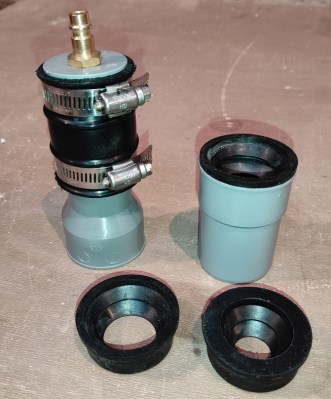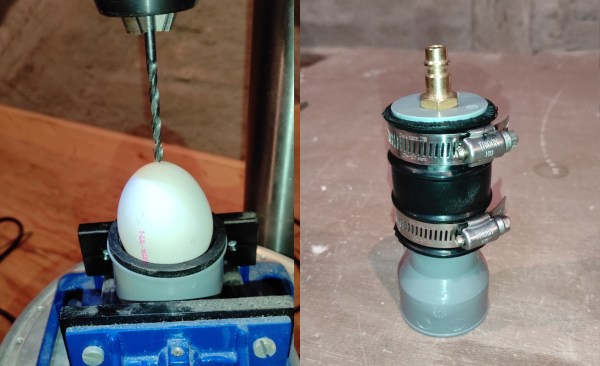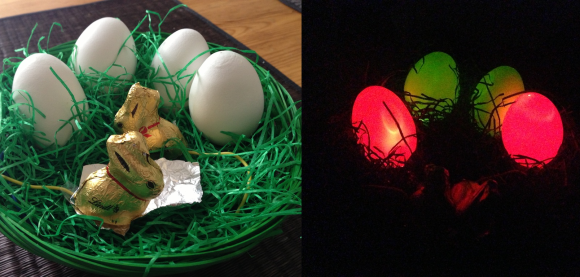As fun as it is to decorate Easter eggs, the road to a hollow hen’s egg is a gross and gooey avenue. Trust us, it sucks to blow out eggs, and it’s hard to get it right. Plus, you know, there’s that whole salmonella thing. [Phil] decided to speed things up this year by using an air compressor to do the dirty work.
 Of course, one must approach this problem delicately because eggs are fragile. It would be nice to drill the egg instead of poking the end with a needle, but how are you gonna pull that off without breaking it? As it turns out, all you need is a bench vise, the right piece of PVC, a bit of rubber to keep the egg safe, and some hose clamps to keep the business part together.
Of course, one must approach this problem delicately because eggs are fragile. It would be nice to drill the egg instead of poking the end with a needle, but how are you gonna pull that off without breaking it? As it turns out, all you need is a bench vise, the right piece of PVC, a bit of rubber to keep the egg safe, and some hose clamps to keep the business part together.
[Phil] built a two-stage contraption that serves both purposes — the bottom cup safely cradles the egg for drilling, and the identical top cup connects to the air compressor, which blows the goo out of the bottom hole. [Phil] might have used negative pressure instead, but doesn’t have a vacuum pump or hose. Be sure to check out the brief demo video below.
Don’t want to mess around with real eggs? There are tons of ways to beautify fake eggs, but few of them are as cool as lasers.














